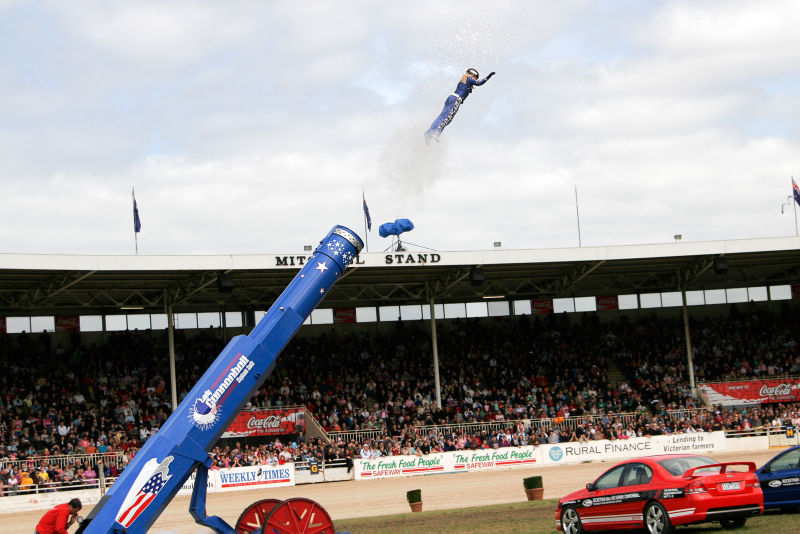Some phrases that I saw in the book “Il continente selvaggio” (original title “Savage continent", Keith Lowe) pushed me to some reflections, not historical, but related to the Italian language.
This doesn't sound correct. Although the erroneous transitive use of the verb "sparare" (to shoot) is deeply rooted in southern Italy I think everyone agrees with the fact that you cannot say "sparare un uomo" instead of "sparare a un uomo" (but I suppose that in case of execution saying "fucilare un uomo" or "un uomo è stato fucilato" is completely legitimate). However, if you ask yourself what is the exact rule to follow, things do not seem so simple because on the site of the Accademia della Crusca there is written the following (I translate in the ugly english of the app badly corrected by me, please forgive me I'm not mother tongue).
Il verbo sparare può essere sia transitivo, quindi reggere un argomento diretto, sia intransitivo e reggere quindi un argomento introdotto da preposizione. La distribuzione di questi due diversi usi è in relazione alle diverse sfumature di significato. In particolare sparare con il significato di 'azionare un'arma da fuoco' è normalmente intransitivo e richiede che sia indicato contro chi o che cosa si rivolge l'azione con un argomento introdotto da preposizione ("sparare a qualcuno", "sparare contro qualcuno"); nei significati di 'far partire uno o più colpi con un'arma da fuoco' o 'scagliare, lanciare' è invece transitivo e può reggere un argomento diretto che però deve essere contraddistinto dal tratto di non essere animato (quindi ad esempio "sparare una fucilata", "sparare un colpo").
The verb to shoot can be both transitive, thus supporting a direct argument, both intransitive and therefore supporting a topic introduced by preposition. The distribution of these two different uses is related to the different shades of meaning. In particular firing with the meaning of 'firing a firearm' is normally intransitive and requires that it be indicated against whom or what the action is aimed at with an argument introduced by the preposition ("sparare a qualcuno", "sparare contro qualcuno") in the meanings of ‘got off a shot with a firearm' or 'hurling, throwing' is instead transitive and can hold a direct argument which must however be distinguished by the trait of not being animated (so for example "sparare una fucilata", "sparare un colpo").
This seems to me incorrect. Really the animated or inanimate nature of the object launched and / or the target has to do with the correctness of the transitive or non-transitive use of the verb "sparare"? Rather, what counts is the fact that the verb "sparare" refers to the target (no transitive use) or what is launched (yes transitive). That is, if I'm the one who presses the button that starts the cannon shooting the stuntman I can legitimately say "ho sparato un uomo".
 And what about the reflective use of the verb "sparare". In the sentence "si è sparato" (he shot himself) he is both the subject and the direct object, and the verb "sparare" is used in a transitive way even if the argument to which the verb refers is animated (the men who committed suicide), or at least it is animated when the action of pressing the trigger is taken (the subject will become non-animated very soon :-)). The rule set out by the Treccani website seems to me to be more correct.
And what about the reflective use of the verb "sparare". In the sentence "si è sparato" (he shot himself) he is both the subject and the direct object, and the verb "sparare" is used in a transitive way even if the argument to which the verb refers is animated (the men who committed suicide), or at least it is animated when the action of pressing the trigger is taken (the subject will become non-animated very soon :-)). The rule set out by the Treccani website seems to me to be more correct.
Nell'italiano standard l'uso di sparare transitivo rispetto al bersaglio (sparare qualcuno; è stato sparato dalla camorra) non è ammesso; è ammesso l'uso transitivo soltanto con l'oggetto interno (sparare un colpo, sparare un proiettile; anch'essa in usi figurati: la sparò così grossa che nessuno gli credette). Insomma, si spara a qualcuno, non si spara qualcuno. L'uso transitivo non ammesso nell'italiano sorvegliato è tuttavia diffuso nell'italiano regionale di alcune regioni centromeridionali (tipico il caso dell'italiano parlato in Campania)..
In the standard Italian the use transitive of sparare with respect to the target (sparare qualcuno; è stato sparato dalla camorra) is not allowed; transitive use is allowed only with the internal object (sparare un colpo, sparare un proiettile; even in figurative use: la sparò così grossa che nessuno gli credette). In short, "si spara a qualcuno", not "si spara qualcuno". However, the transitive use not admitted in the supervised Italian is widespread in the regional Italian of some central-southern regions (typical of the Italian spoken in Campania).
But this seems to contradict the Accademia della Crusca (which speaks about a non-animated direct object). Was the academy wrong or did I misunderstand what they wrote?
